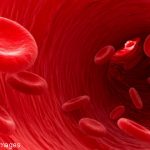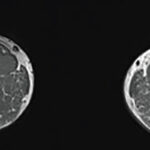“What’s especially interesting—and what we want to explore going forward—is which medications improve both clinical and imaging-based assessments of disease activity.
“This study is hopefully just the tip of the iceberg,” he says. “The next phases of the project will be to standardize quantitative analysis of FDG-PET in LVV, to discover blood and tissue-based biomarkers associated with clinical vs. imaging-based assessment, and to develop validated imaging-based outcome measures for use in clinical trials in LVV.”
Dr. Grayson’s message to his colleagues? “We know that if you image patients later in the course of the disease, you may well find discordant results between the clinical and lab assessments. What this discrepancy means in terms of long-term management remains to be seen. It may be premature to base treatment decisions on imaging findings alone. Ultimately, we need complementary prospective studies in other cohorts before we really know if FDG-PET activity during remission predicts worse long-term clinical and angiographic outcomes. We will also need to balance benefits of advanced imaging in LVV with potential risks, including radiation exposure and cost.
“The bottom line,” says Dr. Grayson, “is that clinical, serologic and imaging-based assessments of disease activity provide complementary and unique information in LVV. We need to learn how best to incorporate these modalities into clinical practices.”
Elizabeth Hofheinz, MPH, MEd, is a freelance medical editor and writer based in the greater New Orleans area.
Reference
- Grayson PC, Alehashemi S, Bagheri AA, et al. 18F-fluorodeoxyglucose–positron emission tomography as an imaging biomarker in a prospective, longitudinal cohort of patients with large vessel vasculitis. Arthritis Rheumatol. 2018 Mar;70(3):439–449.



